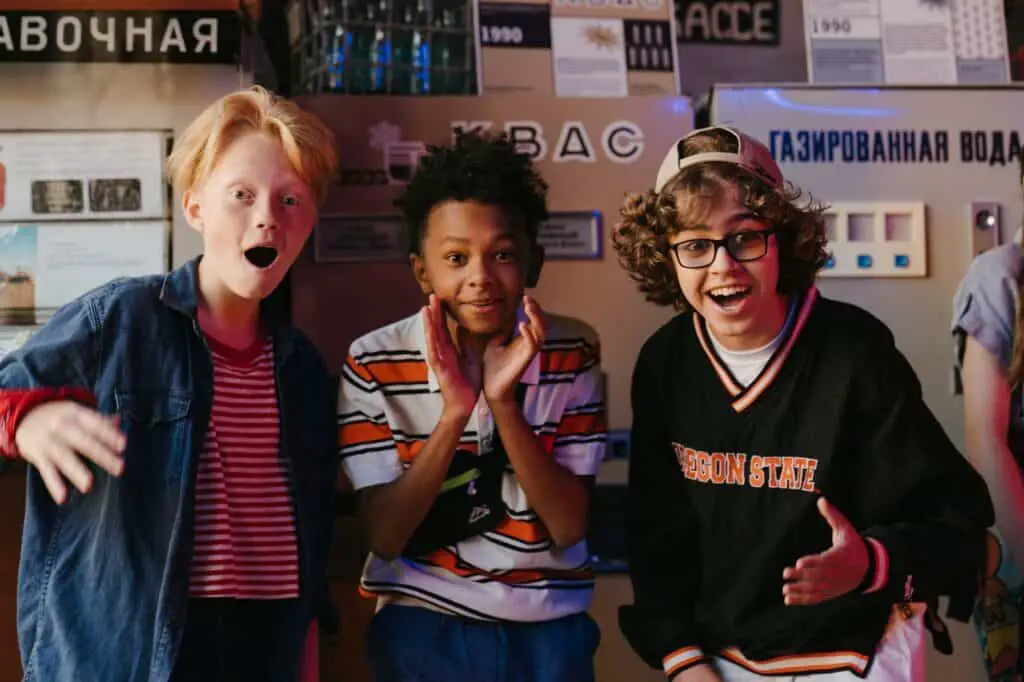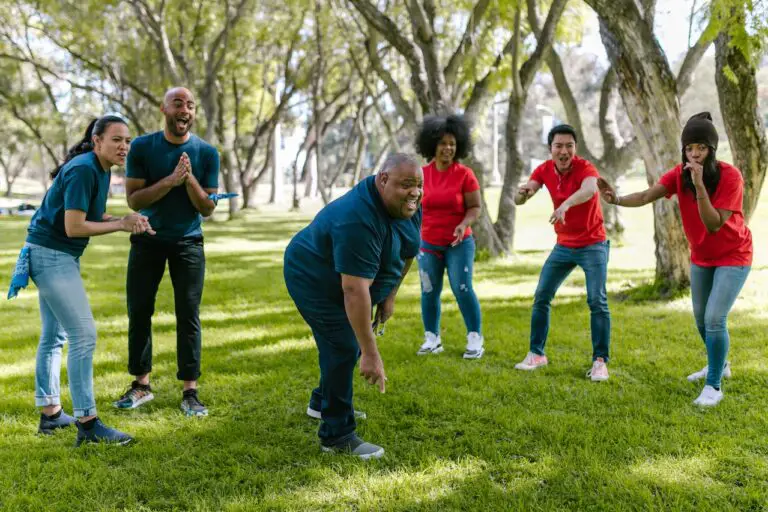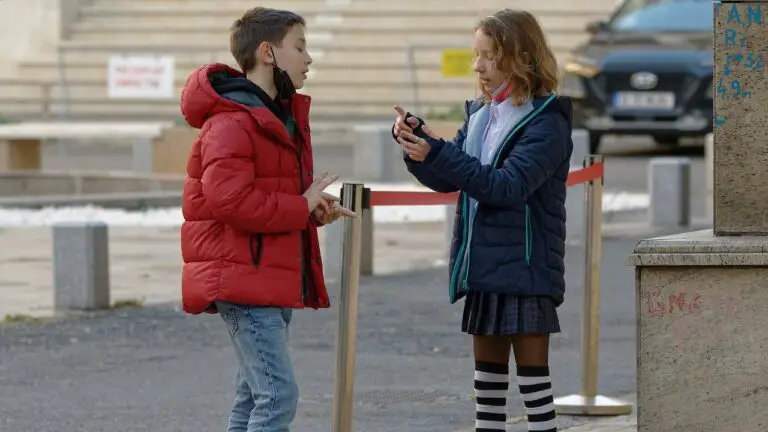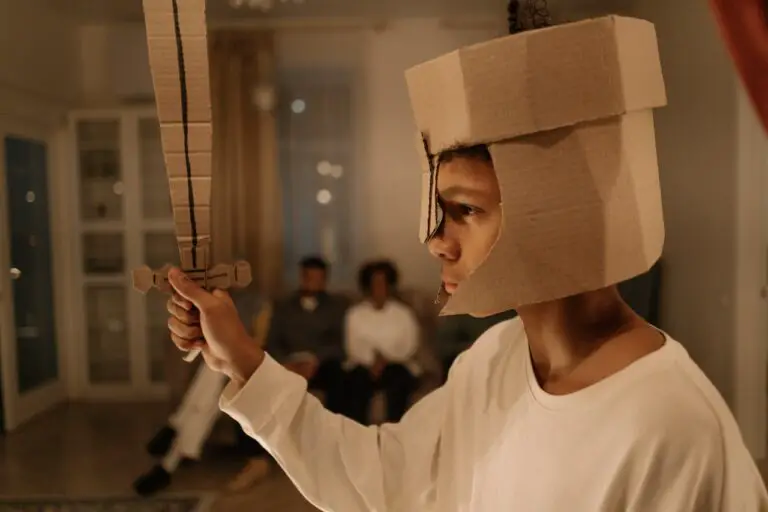Role-playing with kids in EFL/ESL is one of the most exciting activities you can do to encourage them to gain fluency in spoken English. I’ve used it to great success with my students many times.
Coming up with great scenarios takes a lot of time and creativity, so I’ve saved you some of that work by making this list. Every scenario here has been tried and tested in my own classes.
They’re designed for children aged 8-12. Saying that, you could easily adapt them to classes with teenagers and even adults. I wouldn’t feel too comfortable using them with kids much younger than 8, but you’re welcome to give it a try.
For an in-depth guide to getting the best out of role play with kids of this age, read How to Teach Children EFL/ESL With Role Play: Best tips.

My role-play scenario method
Before we get to the list, it’s worth looking at how I designed these scenarios. My hope is that you get some inspiration from the ones I’ve provided and go on to create your own to perfectly suit your classes.
Because your students probably won’t find all five of these scenarios equally interesting. Some might be about things they don’t like. Others might be too dramatic for them to handle.
You know your students best. Being able to tailor role-play scenarios for them is better than just getting plug-and-play scripts from the internet.
Role play isn’t about scripting and forcing language. For that, you should consider dramatization or simulation. To learn the differences, read Dramatization vs Simulation vs Role Play: Guide for EFL/ESL
The first thing to establish is group size. I like to do role plays in pairs (students A & B), with the option of a third member (student C).
Roles A and B are the foundation of the scenario, while role C can either add another moderately important character, or have a very similar role to A or B, so they pair up to do the same thing.
The second consideration is the topic of the scenario. If it’s going to be part of a class studying a particular theme, like the weather, or sports, then I’d want the scenario to include relevant vocabulary and grammar.
On the other hand, role plays often work better when they’re not attached to particular learning objectives. For these free-form situations, I like to base them on what my students are interested in.
For example, if Marvel films are popular in class, I’d focus on situations with superheroes.

The third point to think about is how much scaffolding you need to provide in order for the students to be successful. Some scenarios might be simple enough to let students get started straight away. Others will need more support.
If you want role plays to be longer and more complex, you’ll have to provide appropriate language and perhaps one or two milestones to reach. Otherwise, the kids will get lost and run out of things to say.
Beware of scenarios that require too much scaffolding. If you have to supply large amounts of vocabulary and grammar structures, it’s probably too advanced for them right now. Role plays should rely mostly on previously learned language used spontaneously, rather than repeating given phrases like a robot.
It took me a while to find this balance. And sometimes even the best-crafted scenarios may fall flat, while others are a hit. It’s an art and a science.
Anyway, that’s all the theory out of the way. Let’s get to the 5 scenarios!
1. You won the lottery!
Kids love imagining what they would do if they won ten million pounds in the lottery. This scenario also practices “should” and “could” for giving suggestions and advice.
For all students: you just won £10,000,000 in the lottery!
| STUDENT | ROLE |
|---|---|
| A | You want to spend the money on a big house, expensive cars and holidays. |
| B | You want to give the money to friends and family. You also want to give some money to charity. |
| C (optional) | You want to spend some of the money on fun things, but give some of it to friends and family. |

TIPS
- Let students run wild imagining what they could spend the money on. Especially with student A, let them go beyond buying a house/car/holiday and have them think what cool things they could get with that much money.
- The lottery may not be well known in the country you’re teaching in. If this is the case, adapt the scenario to inheriting money from a long-lost uncle or aunt.
- The aim of the scenario is to compromise. Depending on your students, this may or may not happen. If you think it could end in a shouting match, encourage kids to be kind and look for a way to agree with people who have a different opinion.
2. There’s a fly in my soup!
A fun twist on the boring old restaurant role play. Instead of having a normal conversation about ordering food, why not create a little drama?
This scenario practices ways to complain, express disgust, and apologise.
| STUDENT | ROLE |
|---|---|
| A | You order soup in a restaurant, but when it arrives at your table, there’s a fly in it! |
| B | You are the waiter/waitress in a restaurant. |
| C (optional) | You are eating with student A and later you find a spider in your salad! |
TIPS
- This scenario is relatively short. To make it longer, start it right from the moment the customers enter the restaurant, ordering drinks and food, etc.
- Before the scenario, practice ways of expressing disgust in English. Don’t be afraid to get a bit silly with it, making faces and over-acting.
- Being the waiter is the more challenging role. It involves getting shouted at, and not all students will know what to do. Give them some suggestions before or during the scenario.


3. Lazy superhero
A great way to practice pleading and negotiation while having a lot of fun.
| STUDENT | ROLE |
|---|---|
| A | You are a lazy superhero who wants to watch TV, not save the world. |
| B | The world is in danger! You need the superhero to come and save everyone! |
| C (optional) | You can be a TV news presenter OR help student B convince the superhero to help |
TIPS
- Get student A to commit to being lazy. If they get up and help straight away, the scenario ends quickly. Instead, if they complain, or want something in return, you get more conversation.
- However, in the end, the superhero should probably go and help. Let the kids act out how the superhero saves the world.
- Notice there’s no specific description of what disaster is happening. Let the students invent this. If they’re struggling, help them out with some ideas.
4. Mum bought a pet monkey!
There’s potential for chaos in this scenario, as you’d expect with a monkey present. It practices expressing surprise, shock, and trying to solve a problem.
| STUDENT | ROLE |
|---|---|
| A | You are the mum who just bought a pet monkey for your family. They don’t know about the monkey, but it’s out of control! |
| B | Your mum just bought a pet monkey and it’s climbing everywhere! |
| C (optional) | You are the dad of the family OR (if your teacher allows it) you are the monkey. |
TIPS
- Be careful with this one! It can get out of hand pretty quickly, so make sure your students are able to control themselves. Expect lots of monkey noises.
- If you think it’s too much for kids to handle, change the animal to something less chaotic, but equally surprising, like a penguin.
- There are plenty of ways this can go. Some students may decide to keep the monkey as a pet and enjoy it creating havoc, but at least one student should oppose this idea. Others might try to catch the monkey and take it to a zoo. Let them solve the problem together.
5. Grandpa’s birthday party
This scenario practices planning, sharing ideas and celebrating.
| STUDENT | ROLE |
|---|---|
| A | It’s Grandpa’s 75th birthday tomorrow and you need to plan it! You want it to be a big party with music, dancing and games. |
| B | It’s Grandpa’s 75th birthday tomorrow and you need to plan it! You think the party should be calm and relaxed because Grandpa is old. |
| C (optional) | You are Grandpa. |

TIPS
- As long as there’s enough time, let students act out the birthday party as well as just playing it.
- With student C as Grandpa, encourage students A and B to ask them what they would like.
- Like with all role plays that involve negotiation and compromise, encourage students to be considerate and avoid getting into a shouting match. If you think they can’t manage this, remove the conflict of ideas from the scenario and just let them plan the party how they see fit.
The last word
Role plays with kids offer the best way for them to express and grow comfortable with the language they’ve learned. They can be a bit of a challenge, though. Depending on the personalities in the group, you may want to alter the argumentation and excitement of each scenario to avoid issues.
And don’t overdo it. With kids, role plays are good for 10-15 minutes near the end of class every few weeks. If you do them too much, some children will see them as a chance to misbehave. But if you can find that balance between silliness and learning, you’ve hit the jackpot!
To learn more about how to manage role plays with kids, read How to Teach Children EFL/ESL With Role Play: Best tips.
For more information and guidance on role play in the EFL/ESL classroom, check out all my articles on the subject:
Why All EFL/ESL Teachers Should Use Role Play Activities
Dramatization vs Simulation vs Role Play: Guide for EFL/ESL
5 Problems to Avoid With Role Play in EFL/ESL + Solutions
How to Teach Children EFL/ESL With Role Play: Best tips
Teaching EFL/ESL to Teenagers & Adults With Role Play
5 Awesome EFL/ESL Role-play Scenarios for Teens (+ tips)
5 Exciting EFL/ESL Role Play Scenarios for Kids (+ tips)
5 Engaging EFL/ESL Role Play Activities for Adults (+ tips)








